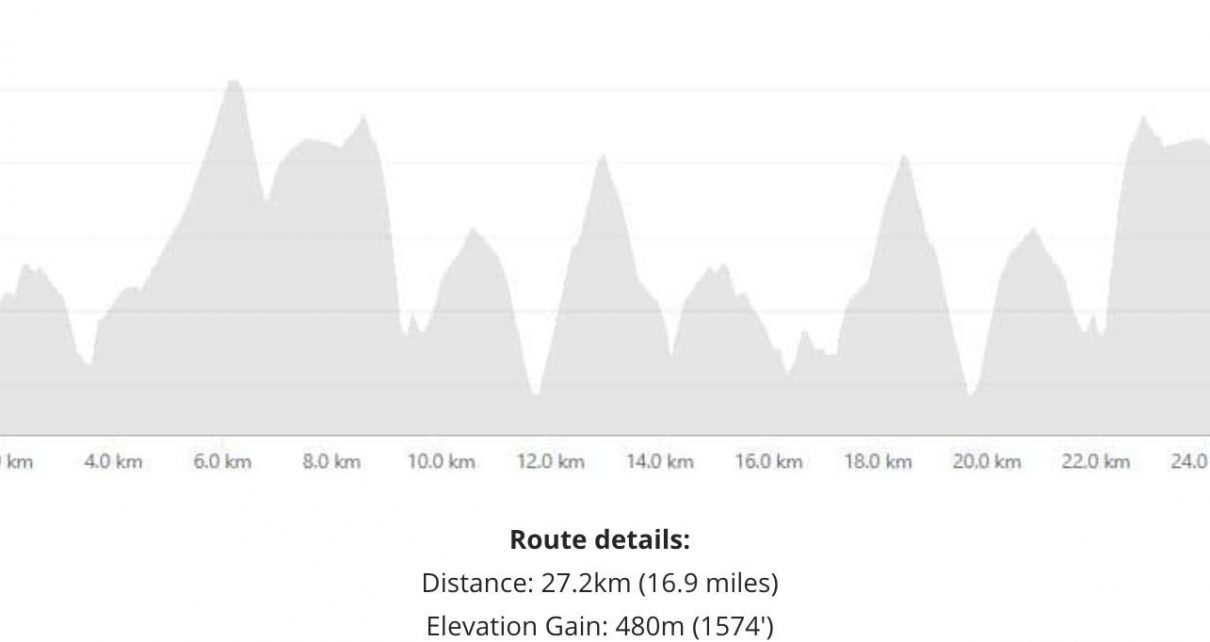Zwift newbie Fred Dreier plans to watch the upcoming Zwift Classics series. Here’s a helpful guide for watching the virtual events.
Of course you have heard of Zwift.
Your riding buddy drones on and on about his virtual racing accolades. Your Instagram feed is packed with images of WorldTour squads spinning invisible miles on Watopia Island. You read the hilarious story about the British YouTuber who was disqualified for an arcane cheating scandal that involved, uh, computers? Maybe you are a Zwift devotee yourself, especially in the current climate.
But you would never, under any circumstances, watch a Zwift race.
Or would you?
Professional bicycle racing’s coronavirus shutdown has left us with few options to get our fix on live racing. I don’t know about you, but have I rewatched so many YouTube clips of old races that I’m starting to talk like Carlton Kirby.
Well, guess what? Live bicycle racing is returning to the calendar this Sunday. There’s one caveat — it’s a virtual race on Zwift. Sunday’s Yorkshire Grand Prix pro/am women’s race is the first of six Zwift Classics, an invite-only series that feature pro riders racing to win. I plan to watch them, and we will host the livestream of the action here on VeloNews.
Full disclosure: I’m a Zwift neophyte. I’ve never used it and I only recently acquired an indoor trainer. I’ve watched a handful of Zwift races in the past, and I generally enjoyed the experience. I’m hardly a connoisseur.
So, I reached out to a collection of Zwift experts for advice on how to watch Sunday’s race, and what to actually look for in the action. Here’s what they told me.
The basics
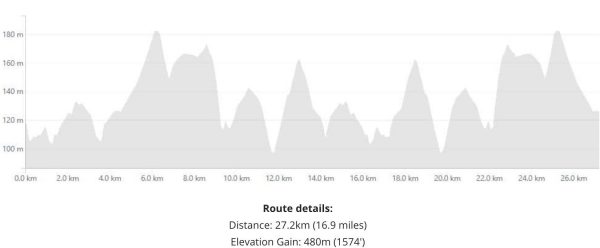
Sunday’s Yorkshire Grand Prix women’s race features a single 27.2-kilometer lap around the Royal Pump Room circuit of the virtual Yorkshire world championships course. It’s a hilly route.
While amateur riders are invited to ride this route later in the week, Sunday’s event is an invite-only race, so only riders who compete on top teams are participating. There are notable pros in the peloton: Kasia Niewiadoma, Elena Cecchin, Omer Shapira, and Shayna Powless, among others.
The racing format is a team points race. Teams of between three to five riders will chase after points that are available at QOM and sprint points along the course, as well as at the finish line.
The team that accrues the most points wins.
The start
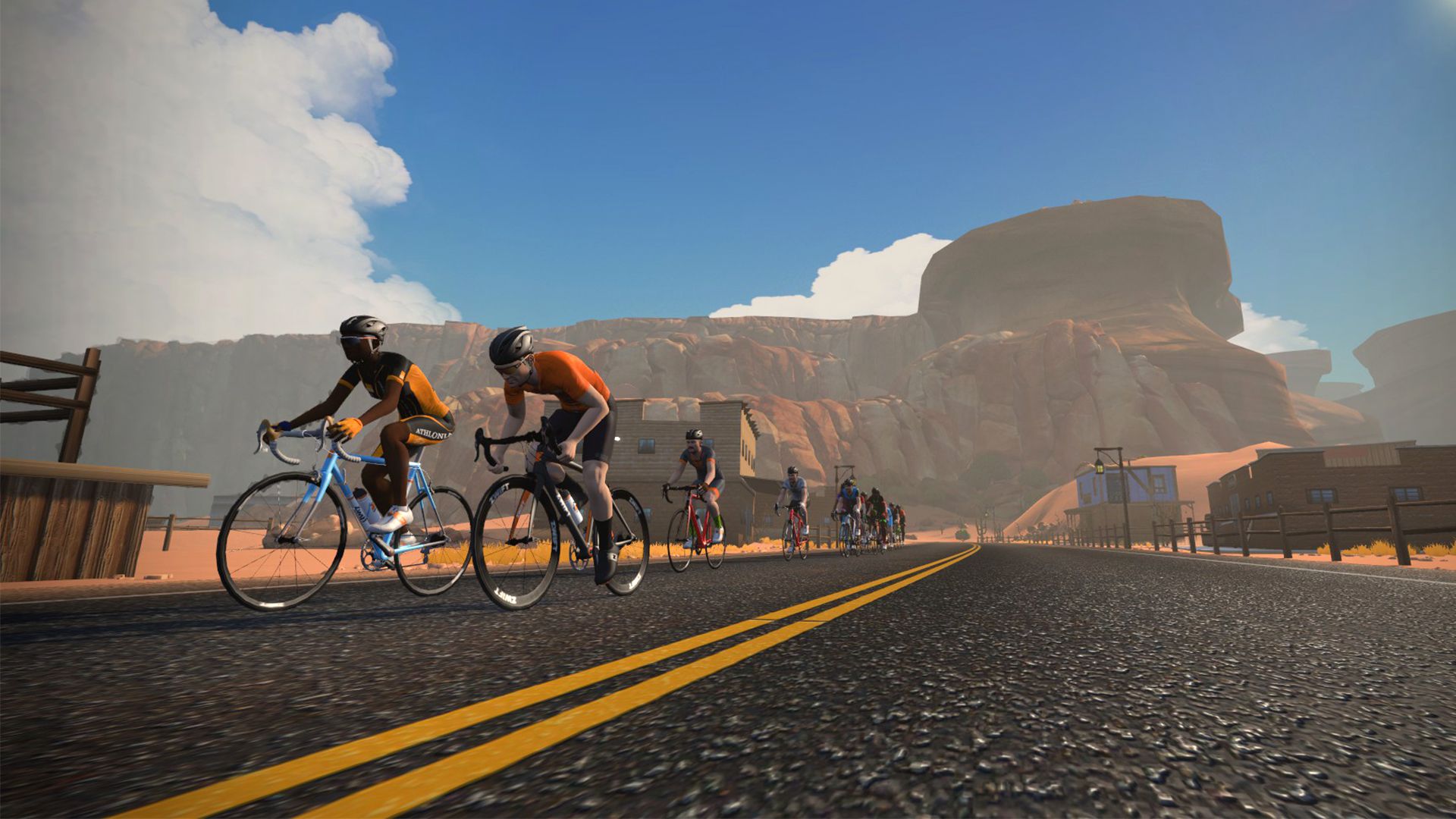
You can forget about a neutral rollout.
The start of a Zwift race mimics that of a cyclocross race, in that the event begins with an all-out effort that can last upwards of five minutes. In fact, most riders actually sprint up to full power in the 10-15 seconds before the gun goes off, so they are hitting a high wattage when the race begins. Riders who wait until the race starts to start pedaling are almost certainly dropped.
“That’s the first selection,” says longtime race announcer Dave Towle, who now broadcasts Zwift races. “The biggest difference is how hard they go at the start, and these are riders who can hold 5 watts per kilo for an extended period of time. You see them go the hardest for the first five minutes and then it settles down, and you see some people dropped right away.”
In Zwift racing, the power of pack drafting can be stronger than in real life. So, once a rider is dropped, it’s almost impossible for them to catch back on.
The screen
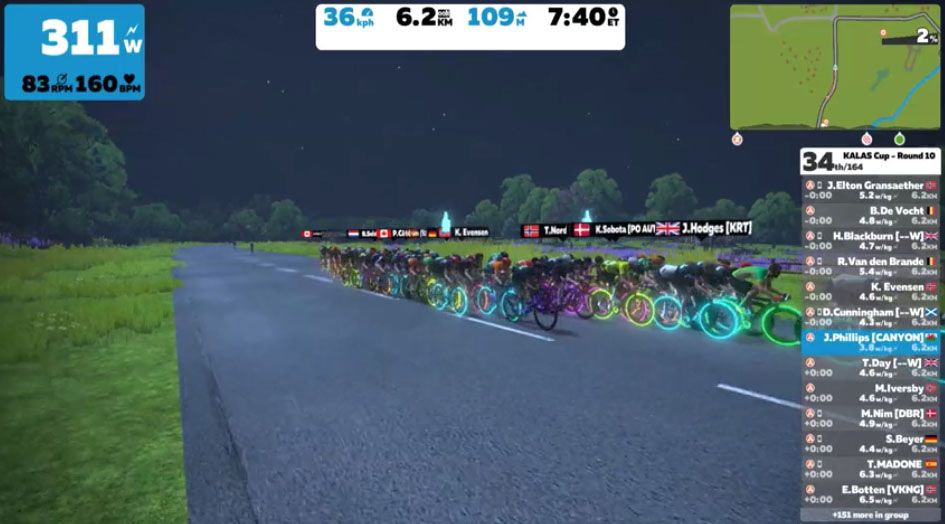
Don’t be scared by the vast array of numbers and data flashing across the screen.
The beauty of watching Zwift racing is you get to see real-time data for all of the racers in the peloton. The most important information available is each rider’s watts-per-kilo, which rises and falls depending on their effort throughout the game. When a rider’s w/kg reading spikes, the number flashes orange to signify an extremely hard effort.
Nathan Guerra, a longtime announcer and the founder of Zwift Community Life, says he always looks for spikes in each rider’s w/kg number on the screen.
“You’re looking for critical hits, when those numbers it 8, 9, or 10 watts-per-kilo, which is what it takes to create separation in these races” Guerra says. “I’m looking for efforts that cause the group to come under a lot of duress because that’s when things are going to break up.”
Much like when you are riding in the game and you can change the view for different perspectives or to watch different riders, in a Classics race, the viewer is treated to multiple views throughout the event.
The strategy
Sunday’s race is a team points event, meaning there are points available at various spots along the course as well as at the finish. Teams will develop different strategies for how to chase after these points, since the cumulative points total crowns the winning squad.
Some teams may try to send riders up the road on early suicide missions to grab points before burning out and fading off the back. Other squads may choose to ride conservatively in the bunch and to then make a surge for the finish line, where more points are available than in the midway sprints and QOMs.
Leah Thorvilson, winner of the Zwift Academy in 2017, said the differences in team strategies is what makes these team points races fun to watch.
“Do you keep as many riders as possible for the final, or do you send a person to go after QOM points at all costs, even though their job is done?” Thorvilson says. “I think you’ll see teams employ a combination of these strategies because the race is really quite short.”
Guerra says he will be watching to see if teams decide to use their sprinter to target the intermediate sprints, or to try and hold on for the finish. The hilly Yorkshire course often sheds the best sprinters before the line. Teams that build their strategy for the final sprint could be gambling that a top finisher can survive the two-minute climb that comes just before the finish.
“Really watch the course profile,” Guerra says. “That will tell the story of the race. Paying attention to where the gradients are on course will help determine who is left for the finish.”
The PowerUps
You’ve heard of if not used Zwift’s PowerUps, which deliver temporary boosts during the race. Riders are given these PowerUps when they pass under the start/finish of a lap, and they are distributed at random. Here’s what they do:
Lightweight (feather): The feature power up reduces your weight by 9.5kg for 15 seconds, offering an advantage on the climbs.
Draft boost (van): The van lets you sit in a rider’s draft with less effort, and it lasts 30 seconds. Riders often use this as extra recovery in the peloton, or in sprints.
Aero boost (aero helmet): The aero helmet reduces your draft for 15 seconds. Riders often use this for attacks on flat or downhill sections, or in sprints.
Burrito boost (burrito): You become undraftable for 10 seconds. Riders often use this to drop a breakaway companion.
Cloaking boost (ghost): You become invisible for 10 seconds. Riders often use this when attacking.
The not-so household names
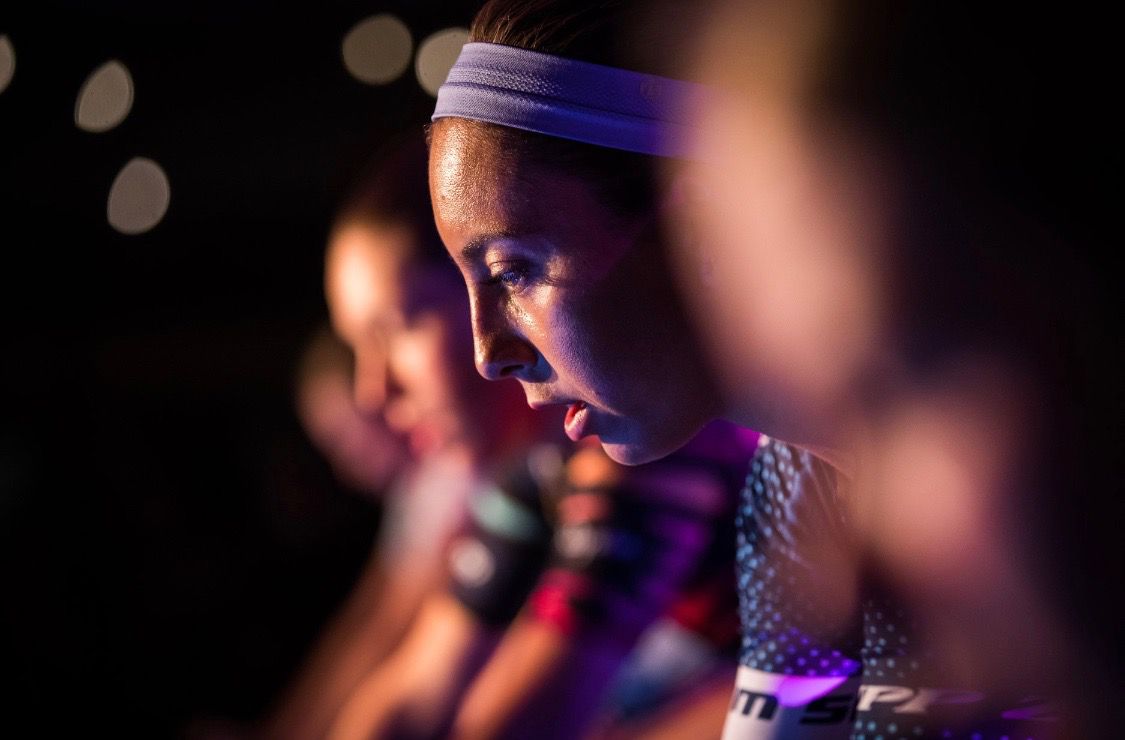
Think that the WorldTour stars will dominate the Zwift Classics races?
Think again.
It’s a safe bet that at least some of the WorldTour pros will get thrashed on Sunday by a cadre of experienced Zwift veterans who you have never ever heard of. Why? Zwift’s video game quirks are tough for newbies to learn on the fly. And the short, intense physical effort in Zwift is unlike the surge-slow effort in a four-hour road race.
Plus, the elite Zwift riders are strong.
“It’s a totally different skillset that you need to be good on Zwift, versus racing in real life,” Thorvilson says. “You need to learn the timing and the tactics and PowerUps and little things like that. There’s definitely a trick to learning it.”
Sunday’s race will see a peloton of not-so household names of riders and teams line up. You will recognize Twenty20 and Canyon-SRAM, but have you ever heard of the Wahoo Esports team, Team Fearless, or the AHDR Ladies-Purple Armada squad? What about Velocity Vixen, Turbo, or the Heino Racing Team? Not likely.
So, who could win?
If the recent Tour of Watopia is a harbinger of riders to watch, keep an eye on the Hieno Racing Team’s trio of Cecilia Hansen, Louise Houbak, and Vicki Whitelaw. Other strong riders are Turbo’s Olivia Baril, Catherine Colyn, and Helen McKay.
Yes, I have never heard of any of these people either. And, to be perfectly honest, that’s part of the appeal of Zwift racing. Someone you’ve never heard of has just as good of a chance at victory as Olympians and pro winners. It’s why I was drawn to gravel racing, fixed-gear criteriums, and all manner of non-traditional racing formats. You simply don’t know who is going to win.
And isn’t that the point of watching a bike race?
